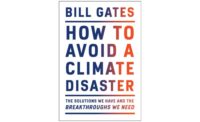When exactly does does Reinier de Graaf find time to write? He has published three books over the last six years—not bad, given that he is also a partner at OMA, one of Europe’s busiest, most respected architectural practices. His latest title, Architect, Verb, follows Four Walls and a Roof (2017)—a compelling collection of essays and diary entries about his life in architecture—and The Masterplan (2021), a surprisingly good, although occasionally cheesy, novel. Colleagues speak of his hammering away at his laptop’s keyboard on long-haul flights, somewhere out over the ocean, while everyone else sleeps. He writes and he writes, and he does it well. Perhaps more worthwhile, then, is to ask why rather than when.
As might be expected, de Graaf approaches writing from within the world of architecture, offering insight into the economic, social, and political pressures of his professional life. Although Four Walls and a Roof began this process in circumspect fashion, Architect, Verb comes out guns blazing. The book purports to be semantic in its intention—each chapter challenges a particular term or catchphrase common in the vocabulary of his colleagues, clients, and competitors. The big words that make de Graaf—a left-leaning late-boomer European—unhappy are professional terms such as “world-class” and “place-making” as well as subjective concepts, including “creativity” and “beauty.” As de Graaf argues, these words may offer architecture a set of goals, but, in fact, when codified by legislators or marketing teams, they create a system, a metric of measurement, that actually distracts from the medium itself.
Occasionally, de Graaf’s intentions seem rhetorical or satirical. In the section dedicated to sustainability, he doubles down—if not triples down—on the sheer profusion of codes an architect must tiresomely navigate. He lists, to a dizzying degree, the number of different updates various green-building rating systems, like BREEAM and LEED, have undergone. De Graaf points out the multitude of indices for sustainable development, which make it difficult for architects to design original, beautiful buildings in different contexts. When he batters away at the sustainability rating systems, the effect is comic. He blithely waltzes through the proliferation of architectural awards, some established only to outflank others. Bespoke prizes have been created by companies to reel in specific practices, for dubious marketing purposes. Here, De Graaf’s commentary is wry as hell.
However, when the Dutch architect adopts a more analytical approach, the book soars beyond cathartic humor. When he addresses a particular place rather than a dictionary definition, his writing is far more compelling. The chapter dedicated to Vancouver and the etymology of “livability” is a superb analysis of the conditions in which 21st-century architecture operates. The architect deconstructs the neologism, recontextualizes it, and then drags it through recent history—illustrating not only the good done in its name, but the bad as well. In the chapter on “beauty,” he nails better than anyone else why the British have such a hang-up on the word. Whereas other nations may deliberate and muse on the subject intellectually, and still others might introduce particular ideas of aesthetics by executive order, the British seem to believe that it is the role of mid-ranking bureaucrats to explain what beauty is to nominally independent architects.
It is one of the book’s recurring themes: how architecture can become constrained by codes or consultancy. The section on evidence-based design, in particular, should be compulsory reading for anyone operating under the misguided belief that architects are omnipotent figures who decree the shape and form of our built environment from on high. De Graaf may fall short of providing emphatic solutions, but no one is identifying the problems or suggesting potential exits from them as wittily or as intelligently as he is.
Why does he write? To get beyond the flak—to arrive at that strange condition, often considered a conceit, where architecture is autonomous. Long may his flights be long.







